Conversation 45: Why do characters in general and internalized characters in particular, who build the social self according to our model, have such an important role in our mental life?
Greetings,
In this comprehensive conversation we will discuss the question of why characters in general and internalized characters in particular are such an important element in the construction of the social self.
Let us first define the self,
The self is the agent or subjective inner center that we identify as ourselves, which represents the "Me" of each of us, and we usually have a sense of its continuity throughout our lives, although some argue that the experience of the continuity of the self differs between different individuals. Although on the one hand everyone has an experience of self, on the other hand quite a few authors claim that the experience of self is a kind of illusion and that many brain processes are involved in our mental life and the self and its functions.

Aharon Saloman [1936- ]
Aaron Saloman suggested that words like self, himself, etc. do not refer to a special kind of entity, but provide powerful syntactic mechanisms for constructing utterances that repeatedly refer to the same thing without tiresome and vague repetition of other referring names or phrases. Others claim that the experience of the self is so intimate and immediately familiar to each of us that the existence of the self cannot be doubted. Kant spoke of the self as a kind of agent that organizes the life of the soul. Philosopher Daniel Dennett defined the self as the "narrative center of gravity". This definition embodies within it the perception of the self both as the center of the experience, and as one that is in a broader and more continuous narrative.

Daniel Dennett [ 1942- ]
The spiritual goal of many approaches and traditions from the East involves the dissolution of the ego, in contrast to the essential self, which in their perception is permanent and conscious, does not require any additional evidence, and it is this that illuminates the activities of recognition [in the sense of CONCIOUSNESS, and enables one to reach self-recognition [in the sense of understanding, perception, etc.] through appropriate practice of man's true nature, an experience or phenomenon known variously as enlightenment, nirvana, presence, and the "here and now" experience.
"Self" also has a significant social aspect since we humans live within a social matrix. Martin Buber, the philosopher claimed that there is no self without you, meaning the other, and the relationship with him defines the self. The question then arises, what is that social self? We believe that the "social self" is a collection of internalized characters with their perceptions, feelings, attitudes and characteristics, where we will elaborate more on this topic later.
Let's now define what internalized characters are:
key figures [usually human], internalized in a person's life, usually refer to the significant people who have played major roles in shaping the individual's beliefs, values, and self-concept. These figures may include family members, friends, mentors, teachers, or any other influential person who has left a lasting impression on the person's psyche. Sometimes these will also include historical, literary, and other figures that left a noticeable mark on the person and were internalized by him.
The term "internalized" implies that the influence of these key figures has been absorbed and integrated into the individual's thoughts, attitudes, and behaviors. This internalization occurs through the process of observing, interacting with, and learning from these important people. As a result, the individual may adopt certain values, perspectives, and ways of approaching life that reflect those of the influential figures.
These internalized figures can serve as guiding forces in decision-making, moral thinking and emotional regulation. Positive influences can contribute to a person's well-being, security and resilience, while negative influences can lead to internal conflicts or challenges in personal development.
Recognizing and understanding the influence of internalized human key figures is essential to self-awareness and personal growth. It allows people to evaluate the values they hold, question assumptions and make deliberate decisions about the kind of person they want to be. In addition, the awareness of these internalized influences can contribute to building healthier relationships and fostering positive relationships with others.
Below, we will mention again the model we propose for "self":
First, a distinction must be made between the "primary self", which is in fact the basic biological nucleus consisting of a number of innate structures and which is subject to development during life, and the "social self" [consisting of "secondary selves"], which is a structure that develops during the person's exposure to social influence, and consists of the internalization of figures significant to the person, originating from external groups or imaginary groups (related, for example, to a story, myth, movie, etc.) that greatly influenced the person. The "secondary self" included in the "social self" includes:
1] The variety of representations of the "Me" that originate from attitudes and feelings towards the self and its representations in different periods of life
2] Representations of internalized characters that often originate from significant characters that the person was exposed to during his life, but as mentioned may also be imaginary characters represented in books, movies, etc. that greatly influenced the person.
3] internalized representations of "subculture" [subculture refers to social influences in the environment [environment] in which the person lives and are not necessarily related to a particular person].
We call the social self metaphorically "the directorate of characters" or more precisely "the directorate of internalized characters" or metaphorically "the board of characters". We note that, in this internalized board of directors, there is usually a hierarchy where there are more influential and dominant figures that we metaphorically called "the dictator self (selves) or the internal dictators" and these set the tone and even censor and determine which contents, positions and behaviors cannot be included in the board of figures. We note that the person as a whole is not usually aware of the influence of the board of internalized characters and recognizes its influence as arising from his own desires and attitudes. We will also note that, as a general rule, the board is very dynamic and there are constant struggles and power relations between the internalized figures that make it up regarding the positions that will be expressed, with the internal dictator or dictators usually dictating the tone.
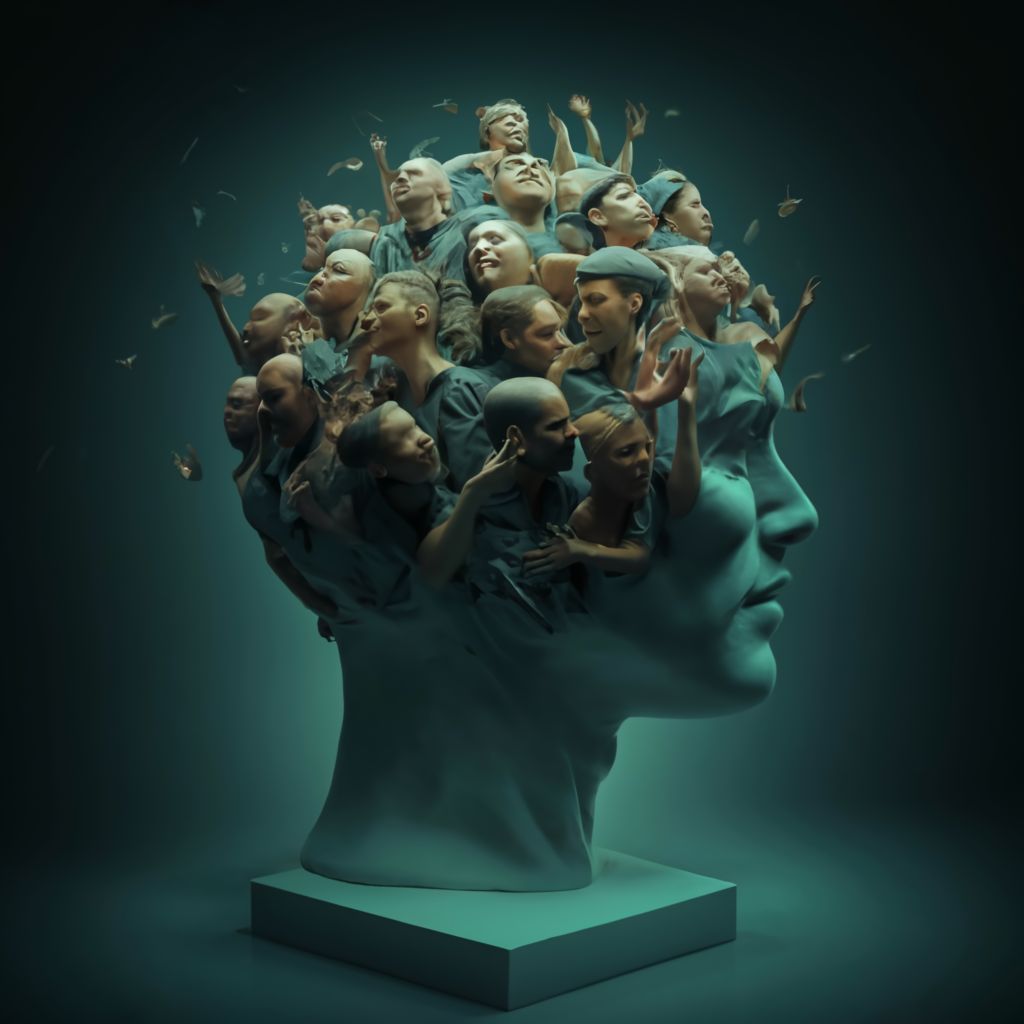
"The Directorate of Internalized Characters"
This is how it is possible to internalize various external figures that influence the person, but we emphasize that usually the most important internal internalization is that of what we called the "self-dictator" inside. Here it is about internalizing a character that has a great influence and shapes the person for good and/or bad, that has a great influence on the board of internal characters that build the social "self". To this internal dictator we assume to possess a decisive role and a profound influence on the internalization of external figures [or in professional parlance external objects]. The dictator's positions play a central role in making decisions about character internalizations. He decides whether the internalization should be rejected or, if accepted, in what form it will be internalized.
In other words, in a certain sense, we assume that this influential figure is also a kind of internal censor. It should be emphasized that we are not concretely talking or speculating about the presence of internalized characters in the inner world of the individual as a kind of “little people” but rather in their representations in different brain areas whose nature and manner of representation in the brain still requires further research. We will also note that although we call this figure a "dictator", except for a certain type, his characteristics are not the same as that of a dictatorial ruler of a certain country, but rather that this figure is dominant and influential among the "Directorate of Figures".
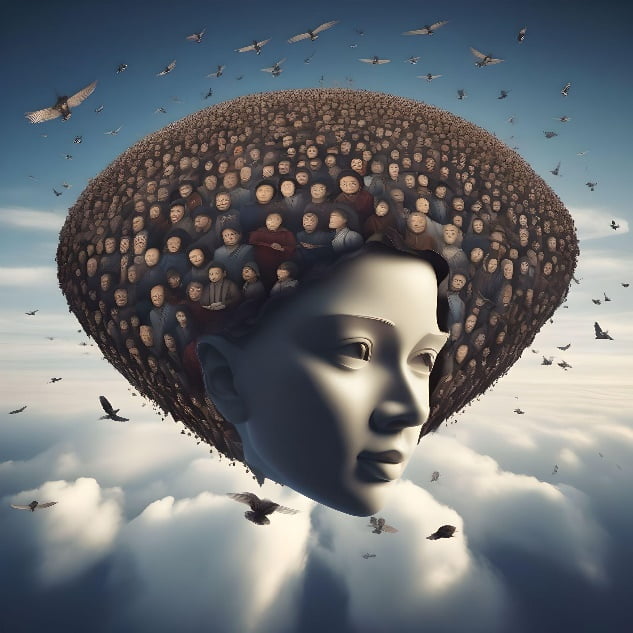
The question now arises why our human mind is so busy with internalizing such key figures?
We will first discuss the neurocognitive foundations of the recognition and internalization of the human figure: evolutionary and social perspectives.
First, the extraordinary ability of the human brain to recognize and internalize human figures appears to be deeply rooted in our evolutionary past. Early humans thrived in social groups, where the ability to recognize individuals provided many advantages, including cooperative behavior, resource sharing, and improved survival. Facial recognition, a product of natural selection, has become a central cognitive skill. Evidence from research in neuroscience, comparative anatomy, and evolutionary psychology supports the claim that the human brain has an evolutionary tendency to prioritize processing human figures.
Based on the work of Charles Darwin, who emphasized the importance of emotional expression in human evolution, studies by David Anderson (2014) and Frith and Frith (2010) provide insights into the social brain and those by Taskeran (200) regarding the evolution of facial recognition mechanisms. Likewise, comparative studies by Tomslow and Cole (2007) shed light on the unique aspects of human social cognition.
[David Anderson (2014) ; Taskiran (2020); Frith & Frith (2010); Tomasello and Call (2007)]
Second, effective communication forms the basis of human social interactions. Today, the neural circuits responsible for decoding facial expressions, interpreting body language and extracting social cues are being studied. Studies in neurobiology and psychology illustrate how the complex networks of the brain enable social communication, emphasizing the importance of human figures in this context. Neuroscientists such as Antonio Damasio (1994) and the Leslie brothers (1997) have studied the neural basis of social communication, emphasizing the role of mirror neurons and the limbic system in decoding emotional signals. In addition, Ekman and Friesen's (1971) research was the basis for understanding the universality of facial expressions.
[Antonio Damasio (1994) ; Leslie Brothers (1997);[] Ekman and Friesen (1971)]
Third, the neural basis of emotional processing is explored, elucidating how recognizing human figures elicits emotional responses. Thus, a role was attributed to oxytocin and other neurotransmitters in the creation of emotional bonds, which contributes to the creation of social bonds and group cohesion. Paul Zack's (2004) work on the neurobiology of trust and connection, along with studies by Donald Pfaff (1999) and others on the role of oxytocin, provide insights into the neurochemical basis of emotional and social bonds. John Cacioppo (2002) studied the importance of social relationships in regulating emotional experiences.
[Paul Zak (2004); Donald Pfaff (1999); John Cacioppo (2002)]
Fourth, human figures are often used as symbolic representations of broader ideologies and concepts. There are brain imaging studies and cognitive science literature that demonstrate how the brain engages in symbolic thinking, attributing meaning to specific human figures as carriers of cultural, religious or political representations. The seminal works of George Lakoff and Mark Johnson (1980) on the theory of conceptual metaphors contribute to the understanding of how the brain engages in symbolic representation. The interdisciplinary approach of Vittorio Galeza and George Lakoff (2005) bridges neuroscience and cognitive linguistics to explore the neural mechanisms of symbolic thought.
[George Lakoff and Mark Johnson (1980); Vittorio Gallese and George Lakoff (2005)]
Fifth, the neural mechanisms involved in observational learning and imitation shed light on how people internalize social norms, behaviors, and values by identifying and imitating key figures. Cultural conditioning and the role of social institutions in shaping the neural architecture is related to the internalization of characters. Albert Bandura's social learning theory (1977) provides a basis for understanding how people learn through observation and imitation. Cultural psychologists such as Richard Schweder (1991) and Geertz (1973) emphasize the role of culture in shaping cognitive processes, including the internalization of key figures.
[Albert Bandura's (1977) ; Richard Shweder (1991); Geertz (1973)]
All these lead to a conclusion based on diverse scientific disciplines about the neuro-cognitive foundations of the identification and internalization of human characters by combining evolutionary, psychological, and sociological perspectives, which provides a comprehensive understanding of why the human mind naturally tends to focus on internalizing of key human figures while emphasizing the adaptive significance of this cognitive phenomenon in the complex fabric of human society.
Is it possible to learn from culture, literature, theater, poetry, mythology, archaeological findings and other fields about the central importance of human figures?
Certainly, the investigation of cultural, literary, theatrical, poetic, mythological, archaeological and other fields can provide valuable insights into the importance of human figures. Let's delve deeper into each area to understand how these areas reflect and contribute to the meaning of human characters:
1. Cultural perspectives:
In different cultures, the representation of human figures has a deep symbolic meaning. Artistic expressions, such as paintings, sculptures and objects, often depict human figures as archetypes embodying cultural ideals, values and beliefs. For example, in classical Greek art, the depiction of heroic human figures in sculptures such as the "Discobolus" conveys ideals of athleticism and beauty.
See literature in this context:
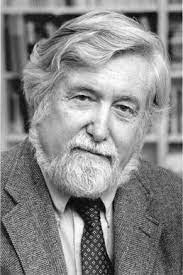
Clifford Geertz [1926 – 2006]
Author: Anthropologist Clifford Geertz
"The Interpretation of Cultures" by Clifford Geertz (1973):
Geertz's influential work in cultural anthropology delves into the interpretation of symbols and rituals in different cultures. It sheds light on how human figures, whether in artistic representations or in social practices, contribute to the understanding of society's worldview.
Author: Edward Said
Title: "Orientalism" (1978)
By the way, in the context of an abstract representation of figures, we often see the identification of countries and concepts with people: this is interesting because when we talk about Russia, we used to talk about the ruling tsar and now about Putin, and if we talk about China, we include Xi Ping and Mao Zedong as representatives, and if we talk about India after all, Gandhi and Narana Modi represented it, and if we think of a dictatorship, we immediately think of dictators like Stalin and his ilk, and when we talk about equal rights, we think of Luther King Jr. and his ilk, and when we talk about physics, Einstein and his ilk, and so on and so forth. Does this imply that our mind associates concepts with figures as representative?
2. Literary and theatrical representations:
Literature and theater often use human characters as central characters to convey narratives and explore the human condition. Shakespeare's plays, such as "Hamlet" or "Romeo and Juliet", emphasize the complexity of human emotions and relationships, and show the enduring appeal of human characters in the story.
For example:
Author: William Shakespeare
Works: plays like "Hamlet", "Romeo and Juliet" and more.
Author: Anton Chekhov
Works: plays such as "The Cherry Orchard", "Uncle Vanya" and more.
• James Joyce's Ulysses: This classic novel examines the life of Leopold Bloom, a Dubliner, over the course of one day. The novel is heavily influenced by Homer's Odyssey, and Bloom's inner world is seen as shaped by a variety of literary and mythological characters.
• Toni Morrison's Beloved: A Pulitzer Prize-winning novel that tells the story of Sethe, a former slave haunted by the ghost of her dead daughter. The novel examines the ways in which trauma and history can shape a person's identity and character.
• One Hundred Years of Solitude: This magical realist novel by Gabriel García Márquez tells the story of the Buendia family over seven generations. The novel explores the ways in which history, myth and memory can shape the lives of individuals and communities.
Poetry often uses human figures and metaphors to express emotions, experiences and social reflections. For example, "Waste land" by T.S. Eliot uses diverse human figures to symbolize the fragmentation and disillusionment of post-World War I society, emphasizing the power of human figures as poetic symbols.
For example:
Author: T.S. Eliot
"Waste land" by T.S. Eliot (1922):
This modernist poem is a complex exploration of the post-World War I disillusionment and fragmentation of contemporary society. Eliot uses various human figures and cultural references to symbolize the spiritual crisis of the time.
◦ Works: Various poems exploring the experience of the African-American character
"Ode to a Nightingale" by John Keats (1819):
◦ In this hymn, Keats ponders the contrast between the immortal song of the nightingale and the transitory nature of human existence. The poem reflects the lasting influence of artistic and natural figures in the face of human mortality.
"The Second Coming" by W.B. Yeats (1920):
◦ Yeats' poem captures a sense of apocalyptic storm and social upheaval. A famous line in the poem "round and round in the widening jair" evokes the image of a falcon, symbolizing the cyclical nature of history and the emergence of new cultural figures.
"The Love Song of J. Alfred Prorock" by T.S. Eliot (1915):
Eliot's modernist poem explores the inner thoughts and anxieties of the speaker, J. Alfred Prorock. The poem touches on the fragmented nature of modern existence and the elusive search for meaning, while incorporating various cultural and literary figures.
These books and poems offer diverse perspectives on the subject of human figures, delving into mythology, cultural anthropology and the complexities of the human experience.
Mythological narratives in various cultures are full of gods, heroes and supernatural human-like figures. These mythical figures serve as archetypes, embody cultural values, explain natural phenomena and offer moral lessons. In Greek mythology, characters like Hercules represent strength and valor, while the trickster figure in native American mythology symbolizes cunning and unpredictable behavior.
For example:
Greek Mythology: In Greek myths, heroes and heroines are often shaped by their relationships with gods and goddesses. For example, Achilles' rage, a central part of his identity, stems from his mother Thetis immersing him in the River Styx to render him invulnerable, except for his heel.
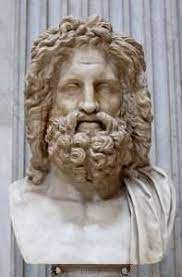
Egyptian Mythology: In Egyptian mythology, the concept of Ba, or soul, consists of nine parts, each of which represents a different aspect of the self. These parts were apparently influenced by different deities.
Below is relevant literature:
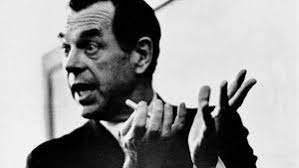
Author: Joseph Campbell
“The Hero with a Thousand Faces" by Joseph Campbell (1949):
This seminal work examines the concept of the hero's journey and the universality of mythic archetypes. Campbell explores the significance of human figures in mythology and their role in shaping cultural narratives.
We will add here three mythological stories that delve into the subject of human figures and their meaning:
1. Prometheus and the creation of man (Greek mythology):
In Greek mythology, Prometheus is a Titan who defies the gods by stealing fire and giving it to humanity. The gods, enraged by this act, punish Prometheus by chaining him to a rock. However, Prometheus' creation of humans and their act of bringing them to enlightenment through fire symbolize the enduring power of human figures to challenge divine authority and shape humanity's destiny.
2. The Hindu creation myth – the clothing of the ocean (Hindu mythology):
In Hindu mythology, the story of the ocean (samudra menthan) is about gods and demons working together to find across the cosmic ocean the elixir of immortality (amrita). During this process, various significant entities and objects appear, including the goddess Lakshmi, the nectar of immortality, and the poison that threatens to destroy the world. This myth illustrates the dynamic interrelationship between divine and mortal figures, and emphasizes the role of human and divine cooperation in the creation and existence of the world.
3. The Epic of Gilgamesh (Sumerian and Akkadian mythology):
In The Epic of Gilgamesh, the hero king Gilgamesh embarks on an immortal quest after the death of his friend Enkidu. This Sumerian and Akkadian myth explores themes of mortality, friendship and the search for eternal life. Gilgamesh's journey includes encounters with gods, supernatural beings, and ultimately leads him to confront the inevitability of human mortality. The epic reflects the significance of human characters in dealing with existential questions and in the search for a transcendent meaning.
These mythological stories provide rich narratives that explore the complexity of human existence, the interplay between gods and mortals, and the enduring significance of human figures in shaping mythological stories and cultural beliefs.
4. Archaeological findings:
Archaeological discoveries often reveal the centrality of human figures in ancient societies. Figurines, sculptures and pictorial representations often depict human forms, providing insights into cultural practices, religious beliefs and social structures. For example, Venus of Willendorf, a Paleolithic figurine, symbolizes fertility and the importance of the maternal figure.
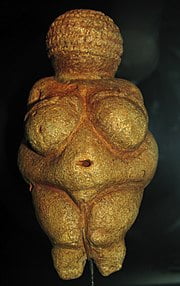
The figure of the Maiden of Willendorf – a find about 30,000 years old
Many archaeological findings revolve around human figures and their interrelationships. See:
• Author: Maria Gimbots
◦ Title: "The Language of the Goddess" (1989)
• Author: James Mellaart
◦ Title: "Katal Hoyuk: A Neolithic City in Anatolia" (1967)
5. Cultural customs and ceremonies:
Cultural practices, rituals and ceremonies often involve the use of human figures as symbolic elements. Masks, puppets and costumes represent human forms in religious and ceremonial contexts, emphasizing their role in connecting people to deeper cultural and spiritual meanings.
See:
• Author: Victor Turner
◦ Title: "The Ritual Process: Structure and Anti-Structure" (1969)
• Author: Mircea Eliade
◦ Title: "The Holy and the Holy: The Nature of Religion" (1959)
6. Contemporary pop culture:
In the modern era, popular culture continues to emphasize the importance of human characters. From iconic movie characters to celebrities and influencers. People continue to be fascinated and identify with human figures who embody certain qualities, aspirations or ideals.
See its preoccupation with human figures in, for example:
• Author: Joseph Payne and James Gilmore
◦ Title: "The experience economy: work is theater and every business is a stage" (1999)
• Author: Marshall McLaughlin
◦ Title: "Understanding the Media: Human Extensions" (1964)
7. Psychology:
Carl Jung's concept of archetypes: Jung believed that the human unconscious is populated by universal archetypes, of figures such as the hero, the shaman mother, and more. These archetypes can be seen as shaping our personality and our understanding of the world.

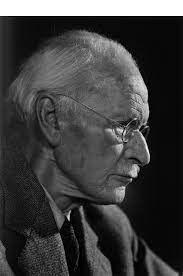
Conclusion:
In many different cultural, artistic, historical, and other fields, the constant use and representation of human figures underscores their continuing importance. Whether in literature, art, mythology, or everyday cultural practices, human figures serve as powerful symbols, reflecting and shaping the collective consciousness of societies throughout history. The multifaceted nature of these representations emphasizes the universal and timeless significance attributed to human figures in human expression and understanding.
Let's move on and ask what types of psychological treatment are used with internalized key characters?
The influence of internalized key figures in psychotherapy is often addressed through therapeutic approaches that explore and analyze the individual's relationships, self-concept, and belief systems. Different types of psychological treatments can be used, depending on the specific needs and challenges of the individual. Below are several therapeutic approaches that may be relevant in relation to internalized key figures:
◦ Description: Psychodynamic therapy examines the unconscious and its effect on behavior. This often involves examining past experiences, including relationships with key figures, to understand how these dynamics influence the individual's current thoughts and behaviors.
◦ Application: Therapists can help patients explore and understand the impact of internalized figures, address unresolved conflicts, and work toward healthier ways of relating to self and others.
2. Cognitive-behavioral therapy (CBT):
◦ Description: CBT focuses on identifying and changing negative thought patterns and behaviors. This often involves challenging distorted beliefs and developing more positive and adaptive cognitive and behavioral strategies.
◦ Application: In the context of internalized key figures, CBT may help individuals identify and challenge negative self-perceptions or beliefs instilled by influential figures, foster cognitive restructuring, and promote healthier coping mechanisms.
3. Attachment-based therapy:
◦ Description: Attachment theory suggests that early relationships with parents and caregivers influence later relationships and emotional well-being. Attachment-based therapy focuses on understanding and improving attachment patterns.
◦ Application: Therapists can explore the individual's attachment history, including relationships with key figures, to identify and address attachment-related issues that may affect current relationships and self-concept.
◦ Description: Narrative therapy helps people reframe their life stories and narratives. It emphasizes the construction of meaning and encourages customers to look at their experiences from different perspectives.
◦ Application: Therapists may help patients reinterpret their relationships with external and internal key figures, empowering them to reconstruct narratives that are more consistent with their values and aspirations.
5. Treatment of the family system:
◦ Description: This approach views people in the context of their family systems and examines how family dynamics and relationships contribute to psychological well-being.
◦ Application: Therapists can examine the role of introverted key figures within the family system, help people understand the interconnectedness of relationships, and foster healthier family dynamics.
It is important to note that the choice of treatment depends on the specific needs and preferences of the individual. Therapists can combine elements from different therapeutic approaches to create a tailored and effective treatment plan.
In order to further emphasize that the engagement with figures is central to many types of psychotherapies let us now explore in detail how each of fifty [no less!] different types of psychotherapies may refer to or use internalized key figures:
1. Psychodynamic therapy:
◦ Internalized Figures: Examines how early relationships and figures influence the client's unconscious, and examines how internalized figures shape current behaviors and perceptions.
2. Cognitive-behavioral therapy (CBT):
◦ Internalized characters: focuses on identifying and changing negative thought patterns and behaviors, including those instilled by internalized key characters.
◦ Internalized Figures: examines the impact of early attachment figures on current relationships, and addresses how internalized attachment patterns affect emotional well-being.
4. Narrative therapy:
◦ Internalized Figures: Helps people reinterpret and reconstruct their life story, including the role of significant figures in shaping personal narratives.
5. Treatment of family systems:
◦ Internalized characters: examines the role of internalized characters within the family system, examines how family dynamics and relationships affect the individual.
6. Person-centered treatment:
◦ Internalized characters: Creates a supportive environment for people to explore their feelings, thoughts and relationships, including those with key characters.
◦ Internalized characters: focuses on the present moment and awareness of internalized aspects of the self, investigates how characters relate to the self.
8. Existentialist therapy
◦ Internalized Characters: Explores existential issues related to personal values, choices, and meaning, including those influenced by significant characters.
9. Dialectical Behavioral Therapy (DBT):
◦ Internalized Figures: incorporates mindfulness and emotional regulation to address the impact of internalized figures on emotional reactions and behaviors.
10. Emotion Focused Therapy (EFT):
◦ Internalized characters: examines how people regulate emotions, addressing emotional responses influenced by internalized characters in relationships.
11. Interpersonal therapy (IPT):
◦ Internalized Characters: Focuses on interpersonal issues and role conflicts, and examines how internalized characters affect contemporary relationships and communication.
12. Scheme therapy:
◦ Internalized figures: examines early maladaptive schemas, addressing core beliefs and patterns influenced by internalized figures.
13. Couples therapy:
◦ Internalized characters: focuses on the influence of internalized characters on communication and dynamics within intimate relationships.
14. Attention-based cognitive therapy (MBCT):
◦ Internalized figures: combines mindfulness practices to observe and change automatic thought patterns, including those influenced by internalized figures.
15. Solution Focused Brief Therapy (SFBT):
◦ Internalized Characters: Focuses on identifying solutions and goals, examines how internalized characters may contribute to or hinder progress.
16. Jungian analytical psychology:
◦ Internalized figures: explores the collective unconscious, archetypes and individuation, including the influence of symbols and internalized figures on the psyche.
17. Adlerian therapy:
◦ Internalized characters: focuses on the individual's social context, examines how early experiences and relationships shape the person's lifestyle and worldview.
18. Logotherapy:
◦ Internalized characters: deals with the search for meaning in life, examines how internalized values and existential concerns affect mental well-being.
19. Transaction Analysis (TA):
◦ Internalized Figures: examines social transactions, examines how parental roles, adults, and introverted children influence communication and behavior.
20. Reality therapy:
◦ Internalized characters: encourages personal responsibility and examines choices influenced by internalized characters to meet basic needs.
◦ Internalized Figures: deals with the impact of gender roles and social expectations, and examines how internalized messages affect mental health.
22. Psychodrama:
◦ Internalized characters: Uses role plays to explore and recreate relationships with internalized characters, promoting insight and resolution.
23. Rational Emotive Behavioral Therapy (REBT):
◦ Internalized figures: focuses on identifying and challenging irrational beliefs influenced by internalized figures.
24. Narrative exposure therapy (NET):
◦ Internalized characters: used in trauma therapy, examines the impact of traumatic experiences and internalized characters on the individual's narrative.
25. Sensorimotor psychotherapy:
◦ Internalized figures: incorporates body awareness to explore and process the impact of internalized figures on the body and mind.
26. Client-centered expressive arts therapy:
◦ Internalized characters: Uses creative expression to explore emotions, relationships, and internalized characters through art, music, or drama.
27. Treatment of internal family systems (IFS):
◦ Internalized Figures: Explores and integrates different parts of the self, including those influenced by internalized figures.
28. Narrative constructivist therapy:
◦ Internalized characters: emphasizes the joint creation of personal narratives and examines the effect of language on the construction of meaning around internalized characters.
◦ Internalized figures: induces altered states of consciousness through breathwork to explore the effect of internalized figures on the mind.
30. Treatment of coherence:
◦ Internalized characters: focuses on creating new neural connections to change emotional and cognitive patterns, including those shaped by internalized characters.
31. Integrative Mind-Body Training (IBMT):
◦ Internalized figures: combines mindfulness and movement practices to explore the mind-body connection, addressing the impact of internalized figures on well-being.
32. Positive psychotherapy:
◦ Internalized Figures: Emphasizes strengths, virtues, and positive experiences to counter internalized negative self-perceptions.
33. Humanistic-existentialist integrative psychotherapy:
◦ Internalized characters: combines humanistic and existential approaches, investigates the influence of internalized characters on personal growth and the creation of meaning.
34. Motivational interview:
◦ Internalized figures: Its purpose is to strengthen the motivation for change by exploring internalized values and goals.
35. Psychoeducational:
◦ Internalized data: Provides information about mental health and coping strategies, including how internalized figures may influence understanding of mental health.
36. Acceptance and Commitment Therapy (ACT):
◦ Internalized characters: Focuses on mindfulness and acceptance to deal with the impact of internalized characters on thoughts and feelings.
37. Equine Assisted Psychotherapy (EAP):
◦ Internalized characters: Involves interactions with horses to explore and process emotions and relationships influenced by internalized characters.
38. Biofeedback:
◦ Internalized Figures: Uses physiological feedback to explore and regulate bodily responses affected by internalized stressors.
39. Hypnosis:
◦ Internalized figures: incorporates hypnosis to address internalized patterns and promote positive change.
40. Process psychology (process work):
◦ Internalized figures: explores and integrates unconscious processes, including those related to internalized conflicts.
41. Transpersonal psychotherapy:
◦ Internalized figures: combines spiritual and sublime aspects of the human experience, examines the influence of internalized spiritual figures.
42. Mind-body mediation (MBB):
◦ Internalized characters: focuses on integrating mind and body to reduce stress, including exploring internalized mental and physical patterns.
43. Intensive short-term dynamic psychotherapy (ISTDP):
◦ Internalized characters: it aims to uncover and process deep emotions and conflicts, including those related to internalized characters.
44. Psychosynthesis:
◦ Internalized characters: integrates different aspects of the personality to achieve self-actualization, examines the influence of internalized components.
45. Focused psychotherapy:
◦ Internalized figures: encourages people to access and process their body sense, explore internalized feelings and emotions.
46. Solution focused hypnosis:
◦ Internalized figures: uses hypnosis to address internalized patterns and promote solution-focused thinking.
47. Handling the game without guidance:
◦ Internalized characters: allows children to express and explore their internalized experiences and relationships through play.
48. Imago couples therapy:
◦ Internalizedd characters: focuses on communication and connection in intimate relationships, while referring to internalized relationship patterns.
49. Neuro-Linguistic Programming (NLP):
◦ Internalized figures: examines the connections between language and behavior, examines how internalized language patterns affect thinking and action.
50. Conscious Self-Compassion (MSC):
◦ Internalized characters: combines mindfulness and self-compassion practices, explores and changes internalized voices of self-criticism.
So each psychotherapeutic approach addresses internalized characters in its own way, whether through investigation, reinterpretation, or changing the impact these characters have on one's thoughts, feelings, and behaviors. Therapists may use a combination of these approaches based on the specific needs and preferences of their clients.
And if until now the issue regarding the importance of characters and their internalization for each of us has not been emphasized enough, we should note that there is quite a bit of evidence for representations of characters in the brain.
The representation of human figures in the brain involves complex neural processes that combine visual, perceptual and cognitive functions. Researchers have investigated the issue using various methods, including brain imaging studies such as functional magnetic resonance imaging (fMRI) and electrophysiological recordings. We note that characterizing the characters is not similar to characterizing the kind of “little people” in the brain, but the characteristics of these are represented in different brain areas, with almost certainly a complex interaction between them.
1. Visual processing:
◦ The primary visual cortex (V1) processes basic visual information, such as edges of bodies and basic shapes.
◦ Higher visual areas, including the ventral stream (related to object recognition) and the dorsal stream (related to spatial processing), contribute to the representation of more complex visual stimuli, including human figures.
◦ A specific region in the fusiform eminence, known as the fusiform face area (FFA), is involved in face recognition.
◦ The occipital face area (OFA) and the superior temporal sulcus (STS) are also involved in face perception and processing social cues from faces.
3. Body perception and movement:
◦ The extrastriate body area (EBA) plays a role in perceiving the parts of the human body.
◦ The superior temporal sulcus (STS) is also involved in biological motion processing and is essential to understanding human motion.
4. Incorporating human figures:
◦ The posterior cingulate and perconeus are associated with integrating information from different sensory modalities, and contribute to a holistic representation of human figures.
◦ The default network (DMN), which includes areas such as the medial prefrontal cortex, is active during rest and may play a role in self-referential processing, which may affect the representation of self and others.
◦ Representation of human figures is not only visual but is influenced by cognitive processes, such as memory, emotions and social cognition. Also other senses like the sense of hearing and another role in the representation of the characters.
◦ The amygdala is involved in processing emotional aspects of faces, and the mirror neuron system may play a role in understanding and empathizing with the actions of others.
Below we will provide a number of abstracts of articles that emphasize in different ways the role of the brain in representing figures that are significant to an individual. We will emphasize that although there are many findings, the knowledge about the representation of figures in the brain is lacking.
NEUROIMAGE
March 2004; 21(3):1155-66.
The neural correlates of maternal and romantic love
Andreas Bartels, Samir Zaki
Summary:
Romantic and maternal love are very rewarding experiences. Both are related to the perpetuation of the species and therefore have a close biological role of crucial evolutionary importance. However, almost nothing is known about their neural correlates in humans. We therefore used fMRI to measure brain activity in mothers while they viewed pictures of themselves and familiar children, their best friend, and familiar adults as additional controls. Maternal attachment-specific activity was compared with that associated with romantic love described in our previous study and the distribution of attachment-mediating neurohormones determined by other studies.
Both types of attachment activated areas specific to each, as well as overlapping areas in the brain's reward system that overlap areas rich in oxytocin and vasopressin receptors. Both deactivated a common set of regions associated with negative emotions, social judgment, and "mentalizing," that is, evaluating other people's intentions and feelings. We conclude that human attachment [to characters] activates a push-pull mechanism that overcomes social distance by disabling networks used for critical social evaluation and negative emotions, while it connects people through engagement of the reward circuits, explaining the power of love to motivate and uplift.
2007 Nov;52(11):726-34.
Neural representation of maternal face processing: a functional magnetic resonance imaging study
Rajamannar Ramasubbu, Svetlana Masalovich, Scott Peltier, Paul E Holtzheimer, Christine Heim, Helen S Mayberg
Summary:
Objective: The mother-child bond may have important implications for emotional development and psychopathology in adults. The aim of the study was to examine brain responses to maternal face processing in healthy adult women.
Methods: Ten healthy adult volunteers with adequate maternal care at a young age and a normal relationship with their living mothers participated in the study. Functional magnetic resonance imaging was used to examine brain responses to images of the subject's mother, a close friend, and two age-matched foreign women during passive, valence (emotional) and salience (self-relevance) viewing.
Results: The main contrast of mother [character] compared to all others (i.e., old and young friends and strangers), demonstrated the following: first, significant activation in the left posterior cingulate gyrus (PCC-Pcu) was withdrawn in all tasks; second, activation of the right medial prefrontal gyrus (VMPFC-ACC) during the valence condition; and third, activation of the left dorsolateral prefrontal cortex (DLPFC) during the salience condition. In the region-of-interest analyses, VMPFC-ACC and DLPFC showed significant activations in response to maternal faces and deactivation in response to control group faces. Among the 3 regions, only VMPFC-ACC activity differentiated the unique processing of the mother's face from that of a close friend. PCC-Pcu activations demonstrated a graded response (mother > friend > strangers), and furthermore, demonstrated a differential response relative to the mother's style.
Conclusions: Activation in the prefrontal cortex and cingulate associated with maternal face processing is consistent with their roles involved in mother-infant interactions, personal familiarity, and emotional and self-relevant processing. These findings suggest a neural basis for maternal attachment and offer a focus for future studies aimed at investigating the impact of disrupted maternal attachment on emotional development.
Soc Cogn Affect Neurosci
2012 Feb;7(2):222-9.
Neural representations of close others in collectivist minds
Gang Wang, Lihua Mao, Yin Ma, Shuadong Yang, Jingqian Cao, Shi Liu, Jinjao Wang, Xiao-ying Wang, Shihui Han
Summary:
Our recent work has shown that close relationships result in shared cognitive and neural representations of self and mother [figure] in collectivist individuals [members of a collective culture such as the Chinese culture] (Zhu et al., 2007, Neuroimage, 34, 1310-7). However, it remains unknown whether close people, such as mother, father, and best friend, are differentially represented in collectivist brains. Here, using functional magnetic resonance imaging and a trait judgment task, we showed evidence that while trait judgments of the self and mother produced similar activity in the medial prefrontal cortex (MPFC) and anterior cingulate (ACC) of Chinese adults, trait judgments of the mother induced MPFC/ACC activity bigger than the trait judgments of the father and best friend.
Our results suggest that while neural representations of self and mother overlap in the MPFC/ACC, close people [characters] such as mother, father, and best friend are unevenly represented in the MPFC/ACC of collectivist brains.
Soc Cogn Affect Neurosci
2017 Mar 1;12(3):417-426.
Peers and parents: a comparison between neural activation when winning for friends and mothers in adolescence
Barbara R Braams, Eveline A Crone
Summary:
Rewards reliably induce ventral striatum activity. Recently studies have shown that indirect rewards trigger a similar activation. Ventral striatum responses to self-rated rewards during adolescence. However, it is currently not well understood how ventral striatum responses to indirect reward develop. In this study, we examine this question using behavioral and fMRI data from 233 participants aged 9-26 who played a scanner gambling game in which they could win or lose money for themselves, their best friend, and their mother. Participants rated how close they felt to their boyfriend and mother and how much they liked winning for them. These ratings were positively correlated. At the neural level, men showed higher responses to winning for a friend, but there were no age differences.
In contrast, there was a marked effect of age when winning for the mother, showing increased ventral striatum activity in mid-adolescence. Furthermore, there was an interaction between age and sex; For women, responses to winning for friends become stronger with age relative to winning for mothers. In conclusion, this study provided evidence for increased ventral striatum responses in mothers in mid-adolescence, and for a change in ventral striatum responses to peers in girls.
2016 Sep 27:7:1467.
The Motivational Hierarchy between the Personal Self and Close Others in the Chinese Brain: an ERP Study
Xiangru Zhu, Lili Wang, Suyong Yang, Ruolei Gu, Haiyan Wu, Yuejia Luo
People base their decisions not only on their own self-interest, but also on the interests of close others. Generally, the personal self has supremacy in the motivational hierarchy in Western culture. A recent study found that friends have the same motivational hierarchy as the individual self in Eastern collectivist culture. What remains unknown is whether the motivational hierarchy of the personal self and close others can be expressed in the collectivist brain. In the present study, we asked participants to gamble for the personal self, close others (ie, mother, father, and close friend), and strangers.
The positive deflection of event-related potentials (ERPs) in response to positive feedback showed the following pattern: personal self = mother = father > friend > stranger. No significant beneficial effect was observed in the loss condition. The present results indicate that the personal self and parents are intertwined in the motivational system in the mind of the Chinese undergraduate student, and support the view that the personal self and parents have the same motivational primacy at the electrocortical level.
Montagrin A, Saiote C, Schiller D. The social hippocampus. Hippocampus. 2018 Sep;28(9):672-679.
The idea of a cognitive map has been proposed as a way to organize our experiences and guide behavior in all domains of cognition. The cerebral hippocampus has been identified as a neural substrate that supports cognitive maps for navigating physical space. Recent evidence extends the role of the hippocampus to mapping other types of spaces. Here we focus on the case of social space as a candidate for hippocampal representation because it integrates multiple continuous dimensions and requires dynamic navigation through social contexts. We present evidence for the role of the hippocampus in (1) supporting social memory, (2) representing different dimensions of social space, (3) monitoring dynamic social behavior, (4) maintaining a flexible map that allows adaptation to new social contexts, and (5) maladaptive social behavior in psychiatric disorders.
To do this, we examine evidence from different species, including birds, rodents, nonhuman primates, and humans, that suggest the involvement of the hippocampus in a variety of social processes. A review of previous findings in the manner predicted by the cognitive map supports the existence of a systematic mapping of the social space by the hippocampus. Evidence for social maps of the hippocampus complements findings from other abstract domains, such as the auditory, temporal and conceptual domains, and enables successful navigation in many areas of daily life.
These studies and many others therefore show that in the brain there are representations of the self and the significant figures in the individual's life [mother, father, close friend, etc.] where their location can change according to proximity to the subject, meaning that this implies the existence of a hierarchy. of the internalized characters.
We will now move on to another aspect, which is the representation of human characters in cell phones and other forms of technology, including computer languages.
The representation of human characters in cell phones and other forms of technology, including computer languages, is a broad topic that encompasses various aspects of technology and its impact on human life.
Cell phones and human representation:
Cell phones have significantly impacted human communication, behavior and social interactions. The widespread use of cell phones has led to changes in the way people communicate, access information and perceive the world around them. For example, the use of emojis [the majority of which are of characters, representations of emotions and the personification of animals and objects] has become a new form of language, influencing the way people express emotions and communicate with each other through text messages. We’d like to remind here that only since the introduction of GUI (Graphical User Interface) the use of the cell phones has become so widespread and influential in our everyday life.
Computer languages:
In the context of computer languages, the representation of human characters is more related to graphic design, user interfaces and virtual environments. Computer programming languages and software development tools used to create applications and systems may incorporate representations of human characters, such as avatars in virtual reality environments or user interface elements in software applications.
It is therefore evident that technology, including cell phones, has had a significant impact on human communication, behavior and social interactions. The impact of technology on human representation in virtual environments and computer languages is a complex and developing field that includes various fields such as graphic design, user experience and software development. It’s important to emphasize that the development is clearly directed towards object-oriented programming once again demonstrating the importance of image processing in human environment.
Finally, we will discuss mental phenomena that emphasize, along with other phenomena, the importance of characters in our lives:

A] The tulpa phenomenon: according to the research of one of the influential anthropologists of our time, Tanya Luhrmann, some people try to make what can only be imagined but feels real. They do this by trying to create thought forms, or imagined beings usually humanoid, called tulpas. Their human creators try to visualize them so vividly that the tulpa begin to look as if they can speak and act on their own. The term entered Western literature in 1929, through researcher Alexandra David-Neill's book "Magic and Mystery in Tibet".
She wrote that Tibetan monks created tulpas as part of a spiritual discipline during intense meditation. The Internet has been a boon to the tulpa practice, with dozens of websites detailing instructions for creating a tulpa. The very fact that people find it possible to intuitively create in their imagination invisible friends who talk to them supports the claim that the idea of an invisible agent is fundamental to our psyche. Finally, we note that in an interview with her, Tanya Luhrmann, who believes in phenomenological research and internal introspection, stated that by looking into her soul over the years, she felt that her self was made up of a collection of characters such as her mother and other influential people.
Luhrmann TM, Alderson-Day B, Chen A, Corlett P, Deeley Q, Dupuis D, Lifshitz M, Moseley P, Peters E, Powell A, Powers A. Learning to Discern the Voices of Gods, Spirits, Tulpas, and the Dead. Schizophr Bull. 2023 Feb 24;49(12 Suppl 2):S3-S12].
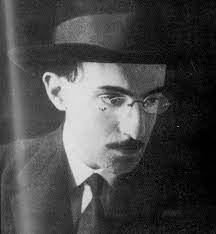
Fernando Antonio Nogueira Pessoa (1888 – 1935)
B] The phenomenon of heteronyms: Fernando Antonio Nogueira Pessoa (1888 – 1935) from Wikipedia and from the book translated into Hebrew by José Paulo Qualcetti [Fernando Pessoa, a sort of autobiography, Pomegranate Publishing] was a Portuguese poet, writer, translator and philosopher, one of the most important literary figures in the 20th century and one of the greatest poets in the Portuguese language who also wrote and translated from English and French.
Pessoa was known for his complex and multi-layered literary works. When Pessoa died in 1935, his family found one of the most sensational literary treasures. 25,000 pages of writings were found in the kind of nondescriptable trunk used to store blankets or winter coats. Some of these works have been completed. Most of them don't. It was difficult at first to know what to do with this legacy. Pessoa's handwriting was poor, he wrote in both Portuguese and English, a product of a South African childhood.
But the most mysterious thing was that he did not seem to be one person. He was a whole galaxy of writers – heteronyms, as he called them, with completely different personalities and different views, often even radically contradictory, they dealt with poetry, style, nature, politics and antiquity. They were all the works of the man named Fernando Pessoa, from the variety of dozens of heteronyms it was difficult to say who Pessoa himself was. Pessoa himself explained: "A pseudonymous work is, with the exception of the name with which it is signed, the work of a writer who writes as himself; a henonymous work is of a writer who writes outside of his own personality: it is the work of an absolute individual invented by him, just as the utterances of any character in a drama would be" .
Pessoa therefore made use of heteronyms, which can be seen as his literary alter egos with their own unique personalities and writing styles, he created about seventy-five other writers and poets, of which three stand out, Alberto Cairo, Alvaro de Campos and Ricardo Reyes. He did not call them "pseudonyms" as he felt that this designation did not capture their true independent intellectual life and instead called them heteronyms. These fictional characters sometimes held unpopular or extreme views [see Wikipedia].
C] The importance of human characters and personalization in the story: a perspective
storytelling has been an integral part of human culture since ever, and has served as a powerful medium for communication and conveying ideas. One fascinating aspect of the story lies in the use of human characters or the personification of animals and inanimate objects. Here are some characteristics of stories in relation to human characters:
1] Evolutionary psychology and human connection:
From an evolutionary perspective, humans are social creatures by nature, and the ability to relate to others is deeply ingrained in our nature. When stories revolve around human characters, it is easier for readers or listeners to identify and connect emotionally.
This connection triggers the release of oxytocin, often referred to as the "bonding hormone", and fosters a sense of unity and shared experience between people.
2] Cognitive engagement and retention:
Studies in cognitive psychology indicate that our brains are wired to remember information more effectively when it is presented in a narrative or story form. Human figures or anthropomorphic entities provide a familiar framework that aids cognitive engagement. When readers or listeners can project themselves onto anthropomorphic characters or objects, the information becomes more relevant and memorable.
3] Emotional resonance and impact:
Humans are emotional creatures, and stories that evoke emotion are more likely to leave a lasting impression. By incorporating human characters or anthropomorphic elements, storytellers tap into the emotional reservoirs of their audience. This emotional resonance not only enhances the overall narrative experience, but also enables a deeper understanding and retention of the basic message.
4] Symbolism and cultural meaning:
The use of human characters and personal entities often carries symbolic weight, contributing to the cultural richness of the narrative. Symbols and archetypes associated with human figures can convey complex cultural or moral concepts. Through the lens of cultural psychology, these symbols serve as a common language that facilitates communication and understanding within a society.
5] The neurological basis for empathy:
Neuroscience studies have shown that when people engage with narratives involving human characters, the brain's mirror neuron system is activated. This system is responsible for empathy and understanding the perspectives of others. By creating characters with whom readers can identify, storytellers leverage this neurological mechanism, enhancing the immersive quality of the narrative.
Conclusion:
Incorporating human characters or personifying animals and objects into a story is not just a creative choice; It is deeply rooted in the psychology of human cognition and emotion. From an evolutionary perspective to the intricacies of neurobiology, the use of such elements enhances the effectiveness of storytelling, fostering connection, engagement and understanding. As scientists continue to explore the mysteries of the human mind, the importance of these narrative elements becomes even clearer in revealing the fabric of our shared stories.

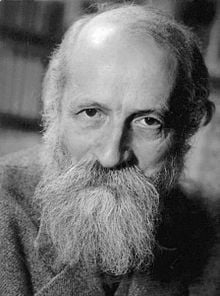
God. Me and You is a philosophical essay that emphasizes the figure of the other person by Martin Buber
This essay presents a social-philosophical concept that deals with dialogic relationships between people, based on honest and direct relationships. Buber attaches crucial importance to interpersonal speech. In his claim that the subject is shaped within the dialogue and the relationship with the other. It is this discourse with the other that builds man as having a spiritual consciousness and personality. According to Buber, the relationship "Me-you" is found in a mental connection to the other in contrast to "Me-them" where the other is used as a tool to achieve a goal without a deep mental connection to him. The dialogue in the form of Me – you, is an act of intimacy of love and responsibility for the other and is different from objective responses that pursue a goal in everyday life.
According to Buber, the essence of man's creation as a man is expressed in his words: "Man is made by Me in You", I have no existence without You present in front of Me. According to Buber, in the relationship between you and me, empathy is created in which "…a person, feeling himself, enters into the dynamic structure of an object stemming from the objects. Buber writes: "The meeting of man with himself is possible and necessary only as the meeting of the person with his fellow man … Only when the individual person recognizes the other in all his otherness as a self, as a person, and from this recognition he emerges and goes towards him, he breaks the barrier of his loneliness….It is clear that this cannot happen except from the vibrations of the personality…" [See Wikipedia]
6] The role of human figures and the personification of animals and objects in dreams:
a] Psychoanalytic perspective (Sigmund Freud):
Freud proposed that dreams are manifestations of unconscious desires and conflicts. According to this view, the presence of human figures, personification of animals and objects can represent symbolic representations of the person's thoughts, desires or unresolved issues.
b] Cognitive perspective:
From a cognitive perspective, dreams may be seen as the brain's way of processing and organizing information. Human figures and personalization of animals or objects may reflect the brain's attempt to understand emotions, memories and experiences.
Some evolutionary psychologists suggest that dreaming may have evolved as a way for the brain to imagine and practice scenarios relevant to survival. In this context, human figures and personification of animals or objects may represent social and environmental elements important for adaptation.
d] Neuroscience perspective:
Neuroscience studies have identified areas of the brain involved in dreaming, and certain neurotransmitters play a role in regulating dream states. The content of dreams, including the presence of human figures or personalized elements, may be influenced by brain activity during sleep.
e] Cultural and personal differences:
The interpretation of dreams can also be influenced by cultural and personal factors. Symbols and archetypes, including human figures or personified entities, may carry different meanings in different cultural contexts or for different people.
g] Emotional Processing:
Dreams are thought to play a role in emotional processing and regulation. Human figures and personalization in dreams may reflect emotional experiences and help people navigate and deal with emotions.
It is important to note that dream research is a complex and evolving field and that dream research often involves a combination of psychological, neuroscientific and cultural perspectives.
7]. There are a variety of mental disorders that emphasize pathology in the context of the perception of characters and the relationships with them.
For example, in autism [not understanding the other], social phobia, [fear and apprehension of others] various personality disorders including antisocial personality [a personality that ignores the feelings of others] narcissistic [one that is focused on itself and less on the other] avoidant [avoids contact with other characters], schizophrenia [here we find for example hearing voices of figures experienced from outside the person and/or paranoia and anxiety about certain figures] and other psychotic illnesses in all of which there is a pathology related to human figures. We will not expand on this topic here, as these mental disorders and their connection to internalized characters will be discussed in other conversations.
We will mention here only one mental disorder that emphatically hints at the possibility of representing more than one image in the brain and that is dissociative identity disorder or by its former name "Multiple Personality Disorder" This is a mental disorder that belongs to the group of dissociative disorders. In this disorder, more than one personality [or internalized character] exists in a person in a certain period of life with its attitudes, feelings and behavior. However, the frequency of the disorder, its very existence and the risk factors for its formation are in dispute.
8]. Religion and faith: the role of gods, prophets and other historical figures in the context of religions.
Finally, a fascinating topic that we will not elaborate on here and may be used as a topic for a separate conversation is the topic of religion and belief in the role of gods [there are beliefs in which one god exists [Judaism, Christianity, Islam] and on the other hand beliefs in which different gods exist side by side like the Hindu religion for example], prophets , and other historical figures in different ways [although we will mention that there are also currents of faith that hold that God does not have titles as a human figure, for example in the view of Maimonid in Judaism]. However, we note that many believers in the different religions humanize the figure of God in different ways.
[See the article by Tanya Lerman Luhrmann TM, Alderson-Day B, Chen A, Corlett P, Deeley Q, Dupuis D, Lifshitz M, Moseley P, Peters E, Powell A, Powers A. Learning to Discern the Voices of Gods, Spirits , Tulpas, and the Dead. Schizophr Bull. 2023 Feb 24;49(12 Suppl 2):S3-S12].
Thus it is interesting, for example, the perception of God by many believers as a figure with different characteristics or as having certain qualities for example as a punishing figure or on the contrary as a merciful and forgiving figure and the like.
Groves [2013] wrote that most people believe in the existence of deities that are not empirically verifiable. Despite the apparent heterogeneity, people's perceptions of their deities focus on predictable themes. Deities are overwhelmingly represented as sentient agents with (more or less) human-like souls. His article reviews accumulating evidence suggesting that this perception exists in part because the ability to represent deities emerges as a cognitive byproduct of the human ability to perceive other figures and evaluate their thoughts.
Basic capacities of human consciousness perception both facilitate and constrain belief in deities, with profound implications for individual differences in religious beliefs, implicit representations of supernatural agents, and various types of non-religious experiences. Furthermore, people respond similarly both to the mention of deities and to cues about social surveillance (e.g. video cameras), leading to interesting results in various areas of prosocial behavior, socially desirable responding, and self-awareness. Accumulating evidence suggests that the concept of consciousness is both a cause and effect of many religious beliefs.
Gervais WM. Perceiving Minds and Gods: How Mind Perception Enables, Constrains, and Is Triggered by Belief in Gods. Perspect Psychol Sci. 2013 Jul;8(4):380-94.
We have therefore brought here an abundance of data that emphasize the importance of figures in general and internalized figures in our mental life in a variety of cerebral, phenomenological, sociological, anthropological, cultural, psychological, psychotherapeutic and psychiatric aspects, and of course the story is not short yet and many more data and testimonies can be brought. From this it seems that it is so important to develop a unique psychotherapeutic treatment that not only deals with the characters, but that these characters form the heart of the treatment.
Indeed, we develop a model for the self, the social self [in which internalized characters play a key role] alongside such a treatment approach [RGFT: the treatment focused on reference groups, see previous conversations].
We will end with a passage from the beginning of the intriguing poem by the poet Amos Noi that emphasizes the collection of internalized characters that build the social self (in free translation):
Mr. Noi is going to eat
"I once called a restaurant
And I booked a table for Wednesday evening
Named after Amos Noi
the kind voice on the other end asked
How many people will you have?
On Wednesday night, Mr. Noi?
boom!
How can I know now?
How many people will I be?
On Wednesday night, Mr. Noi?
boom!
.
Or how many people I was
last Wednesday
Or how many people I am
Right now, Mr. Noi
boom!.
…….."
That's it for now,
Dr. Igor Salganik and Prof. Joseph Levine
 Prof. Joseph Levine, M.D. is an emeritus associate professor in the Division of Psychiatry, Faculty of Health Sciences, Ben Gurion University in Israel. Prof. Levine is a certified psychiatrist with clinical experience in controlled trials of adult psychiatric disorders and in psychotherapy. He was awarded a NRSAD independent investigator grant for the study of Creatine Monohydrate in psychiatric disorders -- mainly Schizophrenia. He resides and treats patients in Tel Aviv and all of central Israel.
Prof. Joseph Levine, M.D. is an emeritus associate professor in the Division of Psychiatry, Faculty of Health Sciences, Ben Gurion University in Israel. Prof. Levine is a certified psychiatrist with clinical experience in controlled trials of adult psychiatric disorders and in psychotherapy. He was awarded a NRSAD independent investigator grant for the study of Creatine Monohydrate in psychiatric disorders -- mainly Schizophrenia. He resides and treats patients in Tel Aviv and all of central Israel.
Leave a comment